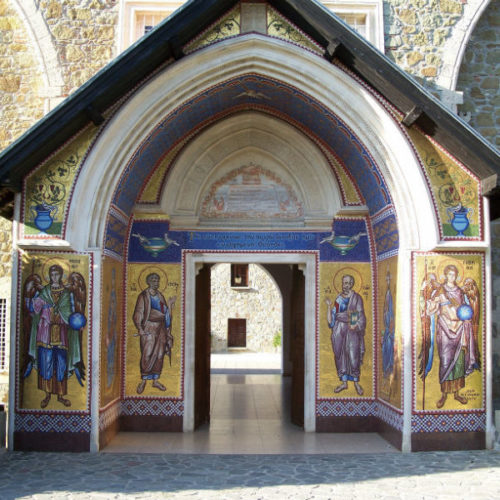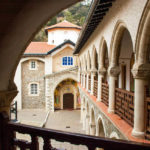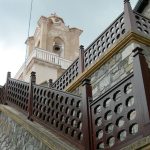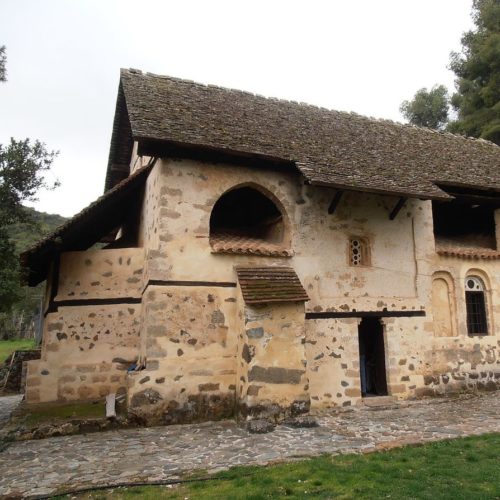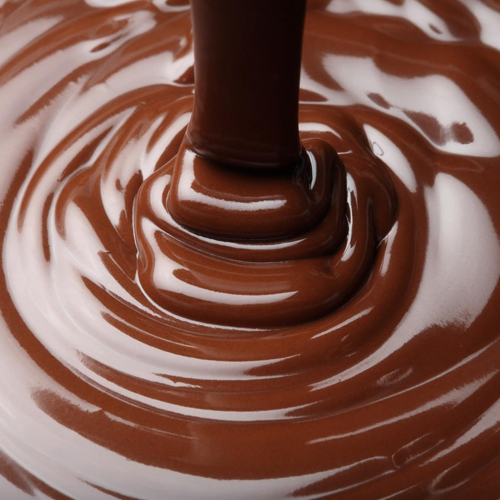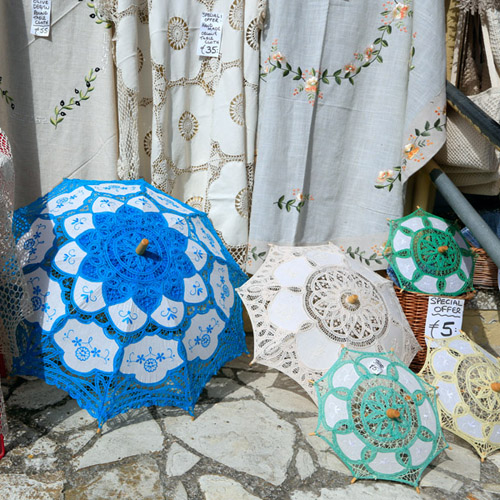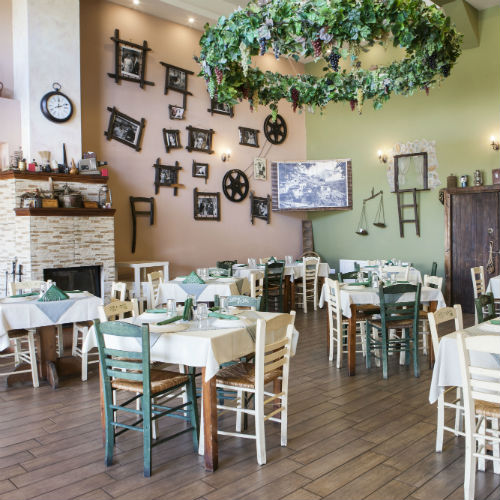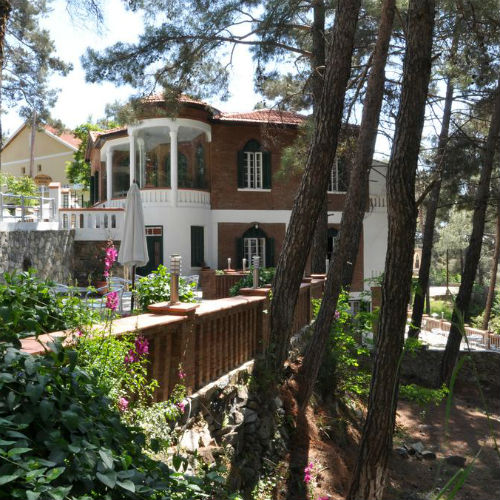Overview
‘Kykkou, Kykkou, Kykkos’ hill / A monastery the site shall fill / A golden girl shall enter in / And never shall come out again’ was the melody a little bird sang around the burgeoning forest where the Monastery of Kykkos was built at the end of the eleventh century by Byzantine Emperor Alexios III Komnenos, according to a local legend.
Located in the Paphos region of the Troodos Mountains, the monastery stands at 1,318 metres above sea level and has sustained damages from four fires throughout its history.
The monastery, which houses an icon said to have been painted by Apostle Luke, is one of the most important heritage sites of the island.
According to tradition, a virtuous hermit named Esaias lived in a cave on the mountain of Kykkos. One day, the island’s Byzantine governor, Doux Manuel Boutoumites, who was spending the summer in the nearby village of Marathasa, went into the forest to hunt. Having lost his way in the forest, he came across the monk Esaias and asked him to show him the way back to the village. The hermit, who was not interested in assisting him, wouldn’t answer his questions.
Boutoumites became angry at the monk’s indifference, calling him names and even maltreating him. Not long after, when the doux returned to Nicosia, he fell ill with an incurable illness: lethargy. In his terrible condition, he remembered how inhumanely he had treated the hermit Esaias and asked God to cure him so that he could personally go to ask the hermit for forgiveness. But God had already appeared in front of the hermit and revealed to him that the very incident had actually been planned by divine will and advised him to ask Boutoumites to bring the icon of the Virgin Mary that had been painted by the Apostle Luke to Cyprus, in return for his forgiveness.
When Boutoumites heard the hermit’s wish, he was taken aback. Since the icon was kept in the imperial palace in Constantinople, Boutoumites considered this mission impossible. Eventually, Esaias explained that it was a matter of a divine wish, and they agreed to travel to Constantinople together to realise their aim.
As time passed, Boutoumites couldn’t find the right opportunity to present himself in front of Emperor Alexios Komnenos to ask him for the icon. As a consequence, he provided Esaias with other icons and items and sent him back to Cyprus. He also assured him that he would soon see the emperor.
By divine intervention, the emperor’s daughter fell ill with the same illness that had struck Boutoumites. The Byzantine doux grasped the opportunity and went to visit the emperor, to whom he recounted his personal experience with the monk Esaias and assured him that his daughter would be cured if he sent the holy icon of the Virgin to Cyprus. In his desperation, the emperor, who had no other option, agreed. His daughter was healed instantly. The emperor, however, not wanting to part with the icon of the Virgin, called a highly skilled painter and ordered him to paint an exact copy to be sent to Cyprus.
That evening, the Virgin Mary herself appeared in the emperor’s dream and told him that she wished for her icon to be sent to Cyprus and for the copy to be kept by the emperor. The following day, the royal boat departed for Cyprus with the icon of the Virgin. According to legend, during the procession of the icon from the coast to the Troodos Mountains, the trees also participated in the welcoming ceremony, piously bending their trunks and branches. With patronage provided by the Emperor Alexios Komnenos, a church and monastery were built at Kykkos, where the icon of the Virgin was deposited.
Today, the monastery produces the local Zivania spirit, alcoholic drinks, and other local handmade products and also holds religious celebrations on September 8 (Birth of the Virgin Mary) and August 15 (Dormition of the Virgin Mary). There is a museum on the grounds, and it is also worth mentioning that it is the monastery where the first president of Cyprus, Archbishop Makarios III, served at as a novice.
The operating hours of the Monastery from November to May are 10.00 to 16.00 and from June to October from 10.00 to 18.00. The Monastery is open all year round but is closed on Public Holidays. The entrance fee is €5.00 per person and for groups €3.00. Opening and closing times as well as entrance fees, are subject to alterations without notice. Visitors are advised to check before visiting.

